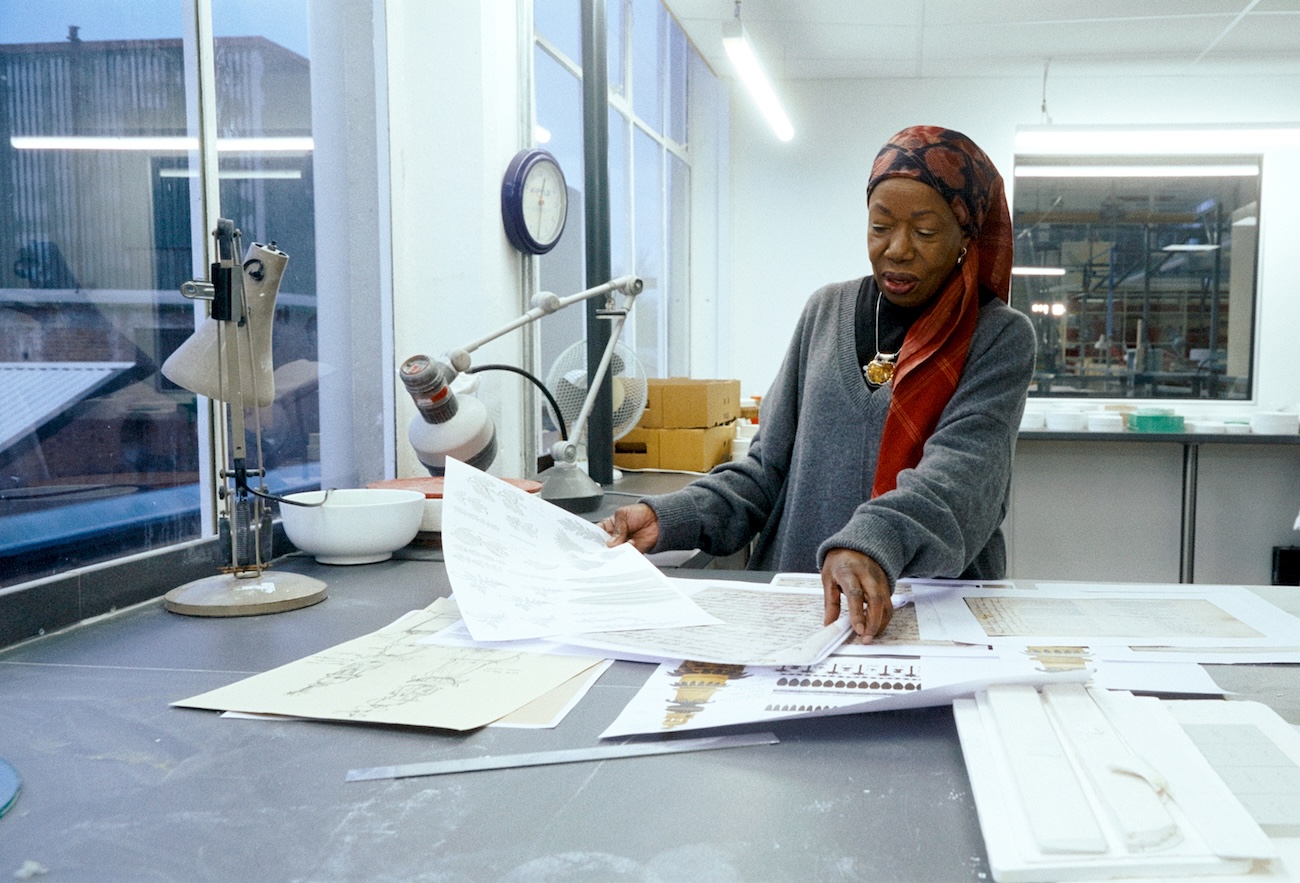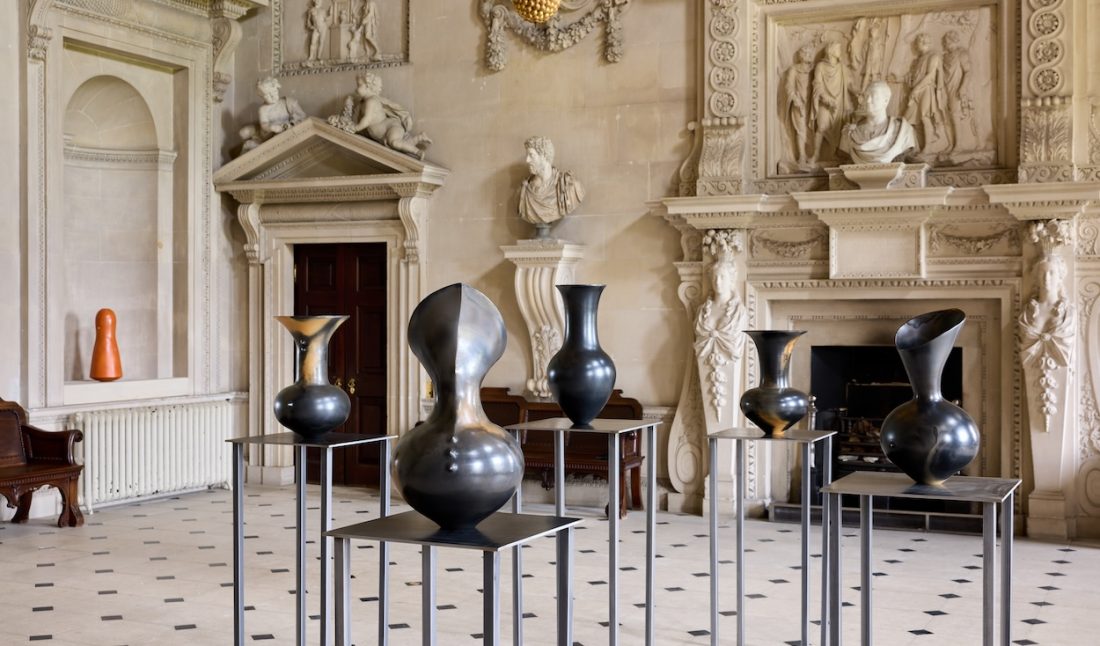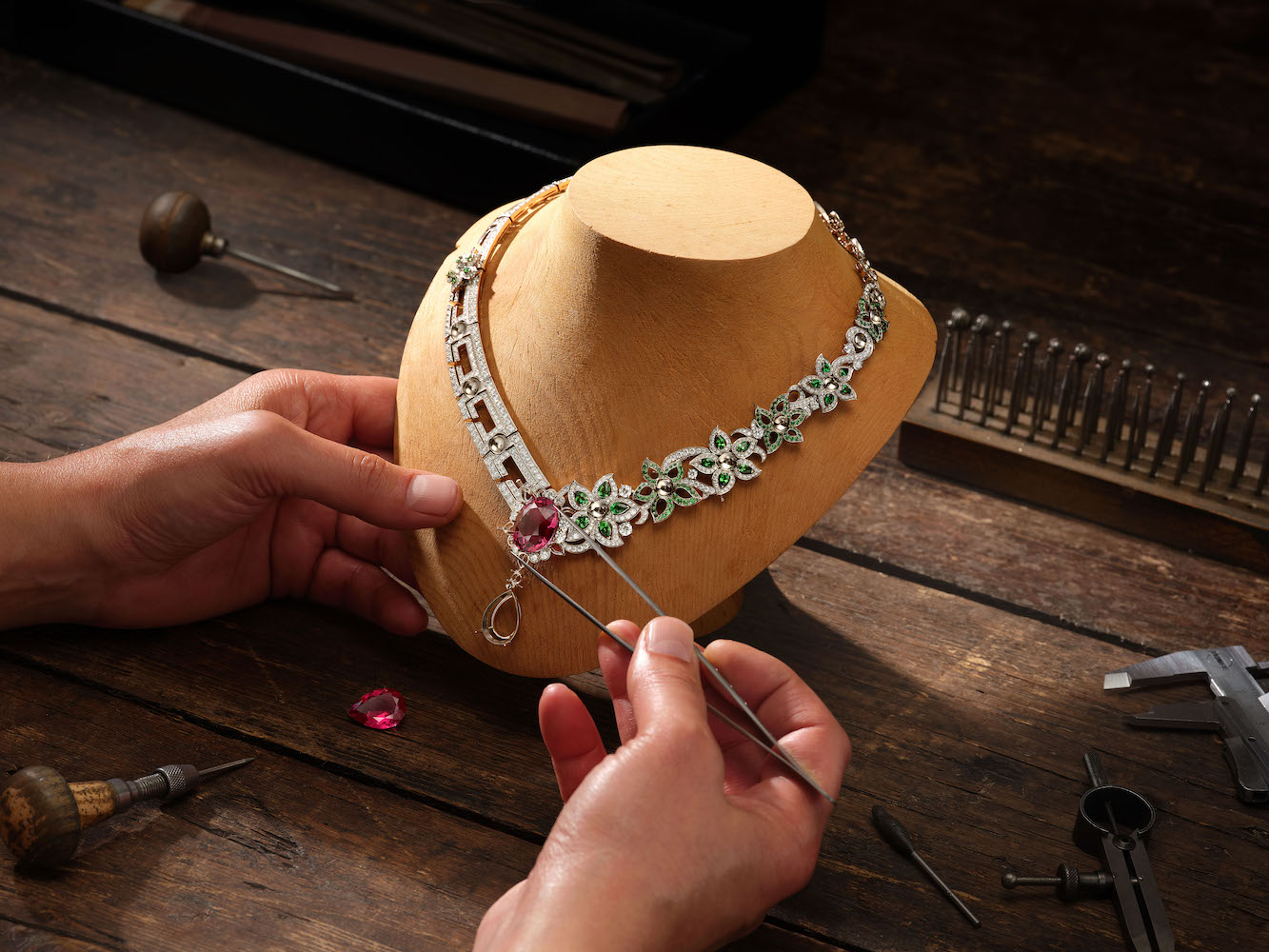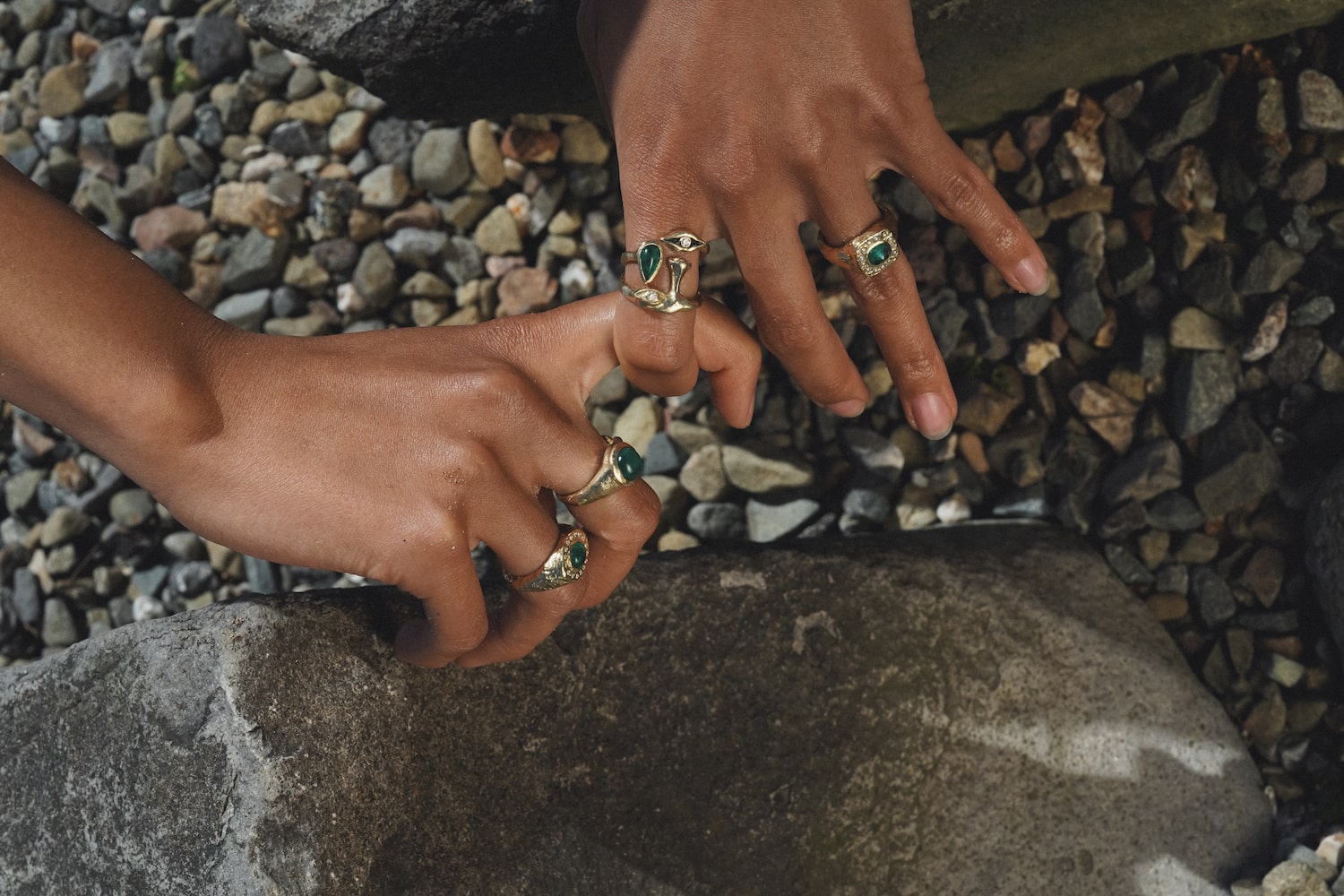LOEWE creative director, Jonathan Anderson, designed an exclusive weekend retreat at Houghton Hall to celebrate LOEWE Foundation artist, Dame Magdalene Odundo, current exhibition displayed from May 12 through September 29.
The LOEWE Foundation Weekend Celebration
During the duration of Odundo’s exhibition at Houghton Hall in Norfolk, England, the LOEWE Foundation continued to celebrate their new sponsorship of the renowned artist at the Norfolk Estate with notable guests Kit Connor, Josh O’Connor, Naomi Ackie, Lesley Manville, Rachel Jones, and more. The private event included an afternoon of tea in the award-winning walled garden and exploration of the grounds that followed into a private tour of the exhibit by Odundo.
The enchanting day concluded with an intimate dinner in the Picture Gallery making the most of a June night. The LOEWE Foundation was established in 1988, by fourth-generation founding Loewe family member, Enrique Loewe. Today the foundation continues to promote creativity and educational programs and protects cultural heritage in the fields of design, art, craft, photo, dance, and poetry.
 Image Provided by LOEWE
Image Provided by LOEWE
The Work of Dame Magdalene Odundo
Dame Magdalene Odundo is one of the world’s most revered ceramic artists. Initially, Odundo received her training in her native home, Kenya, as a graphic artist before moving to the United Kingdom in 1971. Odundo continued her studies at the Cambridge School of Art and the University for the Creative Arts the Royal College of Art. Throughout her 30-year career, Odundo’s work is most notable for her unique sculptural vessels that draw influences from different historical and contemporary cultures. She continues to practice traditional techniques throughout her works that explore diasporic identity and the charged role that objects play in intercultural relationships.
 Magdalene Odundo, Artist in Residence,
Wedgwood. Photographed at the Wedgwood factory, Stoke-on-Trent, England ©Borja Martin Gomez
Magdalene Odundo, Artist in Residence,
Wedgwood. Photographed at the Wedgwood factory, Stoke-on-Trent, England ©Borja Martin Gomez
The Installation at Houghton Hall
Houghton Hall was built in 1722 by Great Britain’s first Prime Minister, Sir Robert Walpole. It is one of the country’s finest examples of Palladian architecture designed by architects Colen Campbell and James Gibbs. The estate was passed to the Cholmondeley family at the end of the 18th Century and has been open to the public since 1976 with continued exhibits from The Houghton Arts Foundation established in 2015.
Odundo’s exhibit is playful in responding to the traditional functionality of Houghton’s State Rooms by thoughtfully inhabiting the interiors through a series of interventions that highlight and disrupt the functional and decorative design schemes. The exhibit showcases Odundo’s existing and new works that have spanned throughout her career.
For this exhibit, Odundo created eight new works that were designed over several months with direct inspiration to the female body. However, the majority of her works find inspiration from manmade objects and the natural world which she orchestrates in expressive forms throughout her vessels. These references and sources of inspiration shed light throughout the Houghton Hall rooms as Odundo’s work is specifically placed.
 Magdalene Odundo at Houghton Hall Installation view © Houghton Hall Photo: Pete Huggins
Magdalene Odundo at Houghton Hall Installation view © Houghton Hall Photo: Pete Huggins
Odundon showcases a new large-scale ceramic sculpture that was created during her time at the Wedgewood factory in Stoke-on-Trent which became an exhibit highlight. During Odundon’s residency, she researched the company through their archive of historic forms digging deeply into Josiah Wedgwood, one of Britain’s greatest innovators and entrepreneurs, particularly his social and political beliefs.
With this inspiration, Odundon’s new work is a towering centerpiece created using historic molds from the Wedgwood archive. The ceramic piece is made out of Jasperware which was a material first developed in the 1770s at Wedgewood. The surface is embellished with a decorative scheme that explores the legacies of slavery while demonstrating the urgency of contemporary political advocacy and protest. Odundon’s work speaks to both the past and present by utilizing clay to create an object that offers universal storytelling.
 Image provided by LOEWE
Image provided by LOEWE











